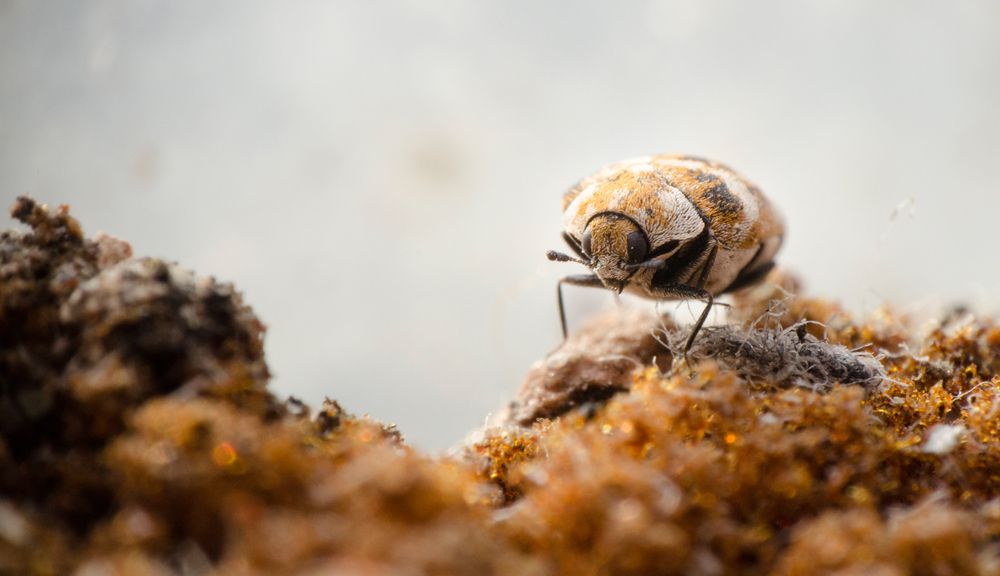Don't Bug Out! Your Cluttered Home Won't Attract Creepy-Crawlies

Do you have a cluttered coffee table or a stack of boxes from that last move you've never gotten around to putting away? Good news — your tendency toward untidiness isn't unhygienic.
The amount of clutter in a house or room doesn't predict the types of insects and other creepy-crawlies found there, new research finds. In a detailed survey of 50 homes in Raleigh, North Carolina, entomologists learned that indoor bug diversity isn't affected by tidiness, pesticide use or pet ownership.
"We found that there was virtually nothing in terms of resident behavior that affected arthropod distribution throughout a house," said study co-author Michelle Trautwein, the assistant curator of entomology at the California Academy of Sciences.
Carpets, windows and doors were associated with more diverse buggy communities, the researchers found. [Photos: 15 Insects and Spiders That May Share Your Home]
Secret roommates
The paper, published today (Nov. 10) in the journal Scientific Reports, is the third set of discoveries from the analysis of the 50 North Carolina homes. Previously, researchers found that the wealthier the neighborhood, the more diverse the indoor bugs, most likely because more luxurious landscaping surrounding the homes means more insects, spiders and millipedes outside that can make their way in. They've also found that 73 percent of indoor insects fall under the categories of flies, beetles, wasps, spiders or ants.
The goal of the new study, Trautwein told Live Science, was to create a map of diversity across different rooms in the house. Anecdotally, for example, one might expect more cockroaches in the kitchen and more spiders in the basement. But this turned out to be only partially true, Trautwein said. There were indeed unique insect communities in basements, which included cave-dwelling species like spiders, camel crickets, millipedes and ground beetles. Elsewhere in the house, however, there weren't many differences between rooms.
Basements are probably different than the rest of the house because they tend to be more humid, less temperature-controlled and subterranean, Trautwein said. Upstairs, the researchers found more diversity on ground-floor rooms than second- or third-story rooms, particularly in ground-floor rooms with many doors and windows. Doors and windows are simply an entry point, the researchers wrote.
Sign up for the Live Science daily newsletter now
Get the world’s most fascinating discoveries delivered straight to your inbox.
"A lot of things that are in your house are really just these outdoor kind of vagrants that filter in from the outdoors," Trautwein said.
Inevitable insects
Carpeting, too, contributed to arthropod diversity, the researchers found. Carpeted rooms had more species, on average, than rooms with wood floors, possibly because carpet both provides cover for living insects and traps dead ones.
Though these architectural and interior-design features made some difference, homeowner behavior seemed to be a wash — human activity didn't appear to have much impact on the critters living in a person's home.
For example, using pesticides may not do much when insects can wander in from outdoors at will, Trautwein said.
As for tidiness, only cellar spiders (family Pholcidae) were associated with areas of greater clutter. Other arthropods appeared regardless of knickknacks, bric-a-brac and strewn-about stuff.
Pets didn't make a difference either, though they have been found to change the microbial composition of homes.
"Bugs in your house are really kind of an inevitable part of human life," Trautwein said.
The study didn't look at homes with infestation problems, just seemingly typical homes. On average, Trautwein said, the homes hosted 100 arthropod species each, roommates that people don't even realize they have. Carpet beetles, small flies, cellar spiders, cobweb spiders and tiny mold-eaters called booklice were found in nearly 100 percent of homes.
"I like thinking about how we do have these long-term relationships with many of these species," Trautwein said. Humans have been building dwellings for about 20,000 years, she said, and some of the most prevalent insect species may have evolved to make our homes their own.
The researchers are working to sample homes globally so they can compare sites in areas as diverse as the Peruvian Amazon, Sweden, Japan and Australia.
Originally published on Live Science.

Stephanie Pappas is a contributing writer for Live Science, covering topics ranging from geoscience to archaeology to the human brain and behavior. She was previously a senior writer for Live Science but is now a freelancer based in Denver, Colorado, and regularly contributes to Scientific American and The Monitor, the monthly magazine of the American Psychological Association. Stephanie received a bachelor's degree in psychology from the University of South Carolina and a graduate certificate in science communication from the University of California, Santa Cruz.











